Fragments of The Past: The Art of Naming Dishes
By Peter Szende and Namrata Sridhar
From the start, menus have been a customer’s first impression into the restaurant’s culinary experience. Menus that have been carefully designed have drawn the customer’s eye to specific dishes and provide guidance when selecting a meal. (e.g. McCall & Lynn, 2008)
Restaurant menu experts have begun to find that using consumer psychology to design their menus have a direct impact on guest purchases and total revenue. These experts have noted that how a menu item is named can influence the guest perception of the dish. “A highly descriptive name can help create value by priming the guest with positive affects.” (Yang, 2013, p. 8)
While descriptive menu labels have been in the center of attention of researchers, the history and practice of naming dishes received little attention.
A Brief History of Menus
In part, based on Marco Polo’s travel notes in China, we could believe that during the Southern Song Dynasty, the commercially lively 13th century Hangzhou had an important restaurant scene where customers, after being seated at taverns, were handed a menu to choose dishes according to their preferences (Gernet, 1962, Szende, Pang, & Yu, 2013).
Similarly, the first menus in Europe appeared at the end of the middle ages. A medieval text written in 1393 “Le Ménagier de Paris,” (The good wife’s guide) presents menus for various occasions and feasts. (Rambourg, 2011).
However, the Germans will often cite their findings about the ‘first written menu’ from a festive banquet in 1541. According to their account, a long note, “ein langer zedel” was placed in front of the guests with the menu created by the Chef, ‘Kuchenmayster.’ (Kindermann, 1964, p. 202.)
The Origin of Naming Dishes
Nicolas de Bonnefons, a 17th-century writer advised chefs to respect “le vray goust” {the true taste} of all menu ingredients; subsequently chefs began to indicate the origin of ingredients used. (Rambourg, 2011, p. 15)
In early years, dish names contained basic menu labels only e.g. “chapon aux herbes” or “poulaille farcie” used by Chef Taillevent (Poulain & Neirinck, 2004, p. 66). However, towards the end of the 17th century, it is assumed that French Chef Massialot, began the practice of naming dishes so that they could be universally recognized.
Since then, giving dishes a name (‘appellation culinaire’) has become an essential characteristic of grand cuisines (Poulain & Neirinck, 2004).
This begs the question, why French dishes needed an additional name? The answer is probably in the complexity of classic French cuisine and the importance of the garnishes. These garnishes were common and integral to French cuisine. “Garnishes consist of various trimmings added to a dish or placed around the meat, chicken, fish, etc., or served at the same time on a separate dish. Garnishes must always blend with the flavor of the basic dish.” (Montagné, pp. 445-446) Garnishes were labeled as either are Simple or Composite and could contain either an individual or numerous components.
The Choisy Menus (1744-1759)
During his reign, Louis XV used the Château de Choisy as a royal residence and a refuge to meet Madame de Pompadour. 413 colorful and richly-decorated menus, many of them hand-calligraphed, commemorating his frequent visits between 1744-1759. The Choisy menus were created in only one copy. Contrary to the current practice of the menu, no menus were distributed to the guests. Louis XV might have wanted to keep the menus as memorabilia. Choisy’s menus were all placed into eight collections keeping as personal memories. The menus were all signed by F.P. Brain de Sainte-Marie; the menu designer’s true identity regretfully remains a mystery (Josserand, 2008).
Many of the menu items indicate the origin of the food, such as “les chapons de Bruges,” or “le marcassin et le chevreuil de Compiègne.” Appellations culinaires appear on the menus as well, referring to the methods of preparation of dishes, such as “à la Strasbourg,” or “à la provençale.” (Rambourg, 2011, p. 15) Some of the menu items were brought in by distinguished guests and the menu items carried their names, such as the wild boar pudding on January 10, 1752: “Boudin de sanglier par le marquis d’Ecquevilliers” (Josserand, 2008, p. 17).
Figure 1. The Choisy Menus (1747 – 1748) – Cover Page
Photograph by Peter Szende
Source: Bibliothèque historique de la Ville de Paris
The Birth of Parisian Restaurant Menus
Beginning in the early 1770s, Spang claims that restaurants utilized printed menus for guests to select their meals. (Spang, 2000) According to an early 19th-century local dining guide, the first Parisian restaurants opened their doors in 1774 (Le guide, 1814, p. 10).
One of the oldest menus that included individually priced items is the Véry brothers restaurant in the 1790s. The menu is structured by categories and several appellations culinaires are present. Some indicate preparation methods, such as the “Tourte à la financière,” or the “Poitrine de mouton à la Sainte-Menehoult aux choux ou aux navets,” or the “Morue à la maître d’hôtel.”
Figure 2. Restaurant Véry – menu created in approximately 1793.
Photograph by Peter Szende
Source: Bibliothèque historique de la Ville de Paris
The previously referenced Paris dining guide also presents some remarkable examples of appellations culinaires. In the menu of the famous restaurant Beauvilliers, we find “Cuisse de dindon grillée, sauce Robert,” or “Deux côtelettes de mouton à la Soubise.” The restaurant ‘Les Frères Provencaux’ offered a large variety of named dishes, such as “Petits pâtés â la Béchamelle” [sic] or “Poulet à la Marengo,” or a “Meringues à la Chantilly” for the sweet tooth. (Blanc, 1814)
Based on Poulain & Neirinck, (2004, pp 66-67), the usage of appellations culinaires exponentially increased between 1651 and 1833.
|
Important French Cookery Books |
% of recipes that include an ‘appellation culinaire’ |
|
La Varenne: Le cuisinier françois – 1651 |
0.02% |
|
Massialot: Le Cuisinier roïal et bourgeois – 1691 |
10.2 % |
|
Menon: La cuisinière bourgeoise – 1774 |
14.5% |
|
A. Carême: L’Art de la cuisine française au XIXe siècle – 1833 |
68.67% |
Popularizing Appellations Culinaires – Champion One: Marie-Antoine Carême (1784- 1883)
Carême was the father of haute cuisine and a devoted codifier of French cuisine; he could be considered as one of the first celebrity chefs who cooked for Georges IV in England and the Tsar Alexander I of Russia. (Jankowski, 2017).
Escoffier later attributed the foundation for French cuisine and preparation to Carême who allowed it to transcend borders and gain appreciation worldwide. (Ferguson, 2004)
From Ferguson, we learn that “Carême baptized each preparation…sometimes he had the ingredients supplied the names…the variants – of soups, of sauces, and other dishes – allowed him greater scope for honorific, geographical, and historical names.” (Ferguson, 2004, p. 72)
For example, shrimp bisque came with a variety of denominations such as “à la française, à la Corneille, à l’amiral de Rigny, à la Périgord, à la princesse, au chasseur, à la Régence, and à la royale.”(Ferguson, 2004. P. 72)
Carême believed that by these appellations culinaires would be more recognizable for culinary professionals. (Ferguson, 2004)
Popularizing Appellations Culinaires – Champion Two: Escoffier (1846-1935 )
“The most famous cook in the world,” Escoffier was considered a champion of French cooking. (Shaw, 1994, p. 9) “Escoffier radically simplified food service by advocating the use of seasonal ingredients and the abandonment of elaborate garnishes. He also streamlined the organization of professional kitchens.” (Britannica, n.d.) Throughout his long career, he invented several infamous dishes that still remain prevalent today. As Escoffier wrote, “I first put Pêche Melba on the menu for the opening of the Carlton Hotel [in London].” (Escoffier, 1997, p. 115)
Much like the Pêche Melba, Escoffier would name all his favorite dishes after women. The range of women extended from princesses to actresses and singers, as well as demi-mondaines. Other times, Escoffier elected to name his dishes after destinations such as Filets de Sole Walewska that was named after the Villa Walewska in Monte Carlo. (Shaw, 1994)
From the beginning, Escoffier remained adamant that the French names remained untranslatable. Because of the French language’s diverse descriptions, he insisted that French “cuisine would continue to speak French.” (Ferguson, 2004, p. 72)
“The Best Dinner I Ever Ate!” Said the Kaiser.
Source: Omaha daily bee, September 24, 1911, Image 35
Let’s refer to Prosper Montagné again: “Garnishes are numerous and important to French cuisine. They are sometimes named after the man who originated them, or for an occasion, or for a place, or for many other reasons. (Montagné, p. 445) Expanding on Montagné’s attempt to better understand appellations culinaires, see below a few selected categories of naming culinary preparations:
|
NAMING CULINARY PREPARATIONS: SELECTED CATEGORIES |
Examples |
Notes |
|
1. Names are Based on Geography |
béarnaise (e.g. sauce béarnaise) |
Béarn is a province of southwestern France. |
|
2. Fantasy or Whimsical Names |
demi-deuil |
(e.g. Chicken demi-deuil, or “half-mourning,”) for the dark color given to the chicken’s skin by the slices of truffle tucked under the skin. |
|
3. Dominant color |
Carmen or Cardinal |
Pinkish red shades |
|
4. Historical events |
à la Marengo |
Commemorating Napoleon Bonaparte’s battle of Marengo |
|
5. Reference to a profession, rank or status |
à la meunière |
In the style of the miller’s wife |
|
à la financière |
A rich mixture; banker’s style |
|
|
6. NOTABLE FIGURES |
||
|
5.1. Celebrity Chefs, Gastronomists and Hoteliers |
à la Dugléré |
Named after the 19th-century French chef Adolphe Dugléré |
|
6.2. Celebrities in Art and Literature |
Carpaccio |
Named after Venetian renaissance painter, Vittore Carpaccio |
|
6.3. Aristocracy and Royalty |
Béchamel |
Marquis de Béchamel, a general of Louis XIV. |
|
6.4. Prominent Historical Figures |
Casanova |
Italian Adventurer |
|
6.5. Politicians |
Bismarck |
Otto von Bismarck, German statesman |
|
6.6. Mistresses |
à la Dubarry |
Madame du Barry – Courtesan of Louis XV |
The table is based in part on principles outlined in Poulain & Neirinck (2004) and Riley (1996).
The ‘Gringoire et Saulnier’
First published in 1914, Le Répertoire de La Cuisine was written by Théodore Gringoire and Louis Saulnier; the latter being Escoffier’s own student. This little book quickly became a standard reference for the culinary world and the Bible for chefs and restaurateurs. The book contained a short explanation of seven thousand classic garnishes. Appellations culinaires helped clarify the meaning of various culinary terms and it denoted specific garnishes and the method of cooking/preparation. As such, generations of culinary or hospitality students will know with closed eyes what the base ingredient is of various appellations: e.g.
|
Appellation |
Denotes |
|
Argenteuil |
Asparagus |
|
Crêcy |
Carrots |
|
Dubarry |
Cauliflower |
|
Florentine |
Spinach |
|
Soubise |
Onion |
|
Clamart |
Peas |
Popularizing Appellations Culinaires in the US – Champion Three – Charles Ranhofer (1836-1899)
Starting in France, many other countries adopted well known French appellations or created their own ones. Delmonico’s, the first fine dining restaurant in the US opened its doors in 1837. In 1862, Charles Ranhofer became their Chef. A French-born and trained Chef who built a remarkable reputation for haute cuisine in New York and invented many legendary dishes such as Eggs Benedict, Baked Alaska (commemorating the purchase of Alaska from the Russians in 1867) or Lobster Newburg. (Delmonico’s, N/D).
Delmonico’s menu offered in 1838 was presented both in English and French and included some appellations culinaires. Here are a few examples: (Menu items are transcribed as found on the menu)
|
Appellations Culinaires in French |
Appellations Culinaires in English |
|
Potage Julienné |
Vegetable soup |
|
Jambon de Mayence |
Westphalia do do |
|
Entre côte de boeuf à la sauce |
[Item is missing] |
|
Petits Patés à la Bechamelle aux truffs |
Little pies with truffles |
|
Maquereau à la maître d’hôtel |
Mackerel fricasseed |
|
Haricot nouveaux à la maître d’hôtel |
Fresh beans with butter sauce |
Source: Carte du restaurant, 1838.
The Delmonico’s in 1897
Source: New York-tribune, August 29, 1897, p. 10.
The history behind Lobster à la Newburg.
Source: The evening times., October 12, 1899. p. 6.
Challenges with naming culinary preparations
Challenge 1 – La langue française
In 1862, when Charles Ranhofer joined Delmonico’s, he switched the bilingual menu to French-only. (Haley, 2011) For decades, this French gastronomic restaurant was clearly the social center for the affluent New York elite.
With time, the concern has become that the French language itself will seriously threaten the survival of appellations culinaires in the New World.
As the world plunged into World War 1, the international society changed. No longer was fine dining merely a privilege for aristocracy. Restaurants acknowledged this change and began to appeal to the growing middle class. (Haley, 2011) Many fine dining restaurants reverted to English-only menus and introduced an array of international cuisine. (Haley, 2011)
However, French restaurants and dishes remained among the leading cuisines. These restaurants continued to appeal to the high-class diners with higher prices and more formal dress codes. (Haley, 2011)
A long debate over the necessity of French menus had begun in American society. Here are three examples:
Source: The Norfolk weekly news-journal., November 18, 1910, Image 4.
Source: The Kansas City sun, September 23, 1916 Image 6.
Source: Albuquerque morning journal February 17, 1917, p. 5
As the usage of French language menus decreased by the end of the first World War, appellations culinaires also diminished.
Challenge 2 – Inconsistency in Naming Dishes
In 1976, Jacques Pépin emphasized the importance of establishing a structure and scope for French cooking and garnishes. However, he lamented that internationally, dishes were produced and named in restaurants without an understanding of the proper garnish to be utilized. (Saulnier, 1976).
In spite of the existing reference books and culinary guides, due to the uncontrolled nature of naming dishes, the globalization and the proliferation and permutation of designations that were used led to a rather chaotic situation in the world of gastronomy.
The fading of appellations culinaires in the culinary world.
Systematically naming culinary preparations in fine dining restaurants had been a norm until Nouvelle Cuisine revolutionized French cooking toward the end of 1960th and in the 1970th. Jacques Pépin wrote in 2003: “Nouvelle Cuisine was, and would remain, the biggest revolution in my culinary life.” (Pépin, 2003, p. 178.)
Nouvelle Cuisine allowed chefs to receive fresh ingredients and condense their menus to focus on specific dishes. This reduced cooking times and overall simplified recipes and dishes. (Pépin, 2003)*
Interestingly, when the first author of this article moved to France in the early 1990th observed many fine dining chefs were still keeping the Gringoire and Saulnier book in their back pockets of their chef pants.
*Note that an earlier, 18th-century culinary movement was also called nouvelle cuisine.
Epilogue
On November 29, 2016, we had the opportunity to interview Chef Jacques Pépin and Chef Jean-Claude Szurdak at the School of Hospitality Administration at Boston University. At this point, we asked Chef Pépin on his thoughts regarding the importance and relevancy of appellations culinaires in modern-day kitchens. Chef Pépin noted that during his early years in the kitchens, these terms were crucial for the success of the restaurants as they were a universal language. With the rise of Nouvelle Cuisine, Chef Pépin confirmed that there was a decrease in these denominations. This created more complicated menu descriptions and decreased comprehension by patrons.
Chef Jacques Pépin and Chef Jean-Claude Szurdak at the School of Hospitality Administration
Photograph by Peter Szende
REFERENCES
Blanc, H. (1814). Le guide des dîneurs ou statistique des principaux restaurants de Paris. (n.p.).
Auguste Escoffier. (n.d.) In Encyclopedia Britannica online. Retrieved from https://www.britannica.com/biography/Auguste-Escoffier
Carte du restaurant français des frères Delmonico. (1838). New York: T.& C. Wood, Stationers.
Delmonico’s (N/D). Delmonico’s Restaurant. Retrieved from https://delmonicos.com/about/
Escoffier, A. (1997). Memories of My Life. New York: Van Nostrand Reinhold.
Ferguson, P.P. (2004). Accounting for Taste: The Triumph of French Cuisine. Chicago: The University of Chicago Press.
Gernet, J. (1962). Daily Life in China. Stanford, CA: Stanford University Press.
Haley, A. P. (2011). Turning the Tables: Restaurants and the Rise of the American Middle Class, 1880-1920. Chapel Hill: The University of North Carolina Press.
Jankowski, N. (2017, January 12). How A Destitute, Abandoned Parisian Boy Became the First Celebrity Chef. National Public radio, Inc. Retrieved from
https://www.npr.org/sections/thesalt/2017/01/12/509154654/how-a-destitute-abandoned-parisian-boy-became-the-first-celebrity-chef
Josserand, C. (2008, May). Les soupers de Louis XV et les menus de Choisy. Mémoire d’étude – École du Louvre.
Kindermann, H. (1964). Über die guten Sitten beim Essen und Trinken. Leiden, Netherlands: Brill
McCall, M. & Lynn, A. (2008). The Effects of Restaurant Menu Items Descriptions on Perceptions of Quality, Price, and Purchase Intention. Journal of Foodservice Business Research, 11(4), pp. 439-445.
Montagné, P. (1961). Larousse Gastronomique: The Encyclopedia of Food, Wine & Cookery. Crown Publishers, Inc.: New York.
Pépin, J. (2003). The Apprentice: My Life in the Kitchen. New York: Houghton Mifflin.
Poulain, J-P & Neirinck, E. (2004). Histoire de la cuisine et des cuisiners (5th ed.). Paris: Éditions LT Jacques Lanore.
Rambourg, P. (2011, January). Le menu du Moyen Âge au XX e siècle : témoin de l’histoire et de la gastronomie. Retrieved from the Bibliothèque municipale de Dijon website: http://patrimoine.bm-dijon.fr/pleade/pages/doc/document_rambourg.pdf
Riley, S. (1996). Eigennamen in gastronomischen Garnituren im Deutschen und Englischen oder: Was sind echte Langenburger Wibele und Yorkshire Pudding? In R. Gläser (Ed.), Eigennamen in der Fachkommunikation (pp.131-154).
Saulnier, L. (1976). Le Répertoire de La Cuisine. London: Leon Jaeggi & Sons Ltd.
Shaw, T. (1994). The World of Escoffier. New York: The Vendome Press.
Spang, R. L. (2000) The Invention of the Restaurant: Paris and Modern Gastronomic Culture. Cambridge, MA: Harvard University Press.
Szende, P., Pang, J.K. & Yu. H. (2013). Experience Design in the 13th Century: The Case of Restaurants in Hangzhou. Journal of China Tourism Research, 9(1), pp. 115-132.
Trubek, A. B. (2000). Haute Cuisine: How the French Invented the Culinary Profession. Philadelphia: University of Pennsylvania Press.
Yang, S. (2013). Menu Design for the Food and Beverage Operation. In. P. Szende (Ed.) Hospitality Management Learning Modules. Boston, MA: Pearson Education, Inc.
About the Authors
Dr. Peter Szende has over 25 years of management experience in the hospitality industry in both Europe and North America. He is currently a Programme Lead in Hospitality Management at Oxford Brookes Business School, UK.
Namrata Sridhar is a graduate of Boston University’s School of Hospitality Administration (BU SHA) class of 2019. She currently works for Tock HQ as a marketing coordinator in Chicago, IL. She has also previously worked in a marketing communications capacities at RealFood Consulting as well as EF Education First in both a marketing and operations role. During her time at BU, Namrata also served as the President of the Student Government of BU SHA and was an active member of the National Society of Minorities in Hospitality, the American Hotel and Lodging Association, and the Hospitality Sales and Marketing Association International.

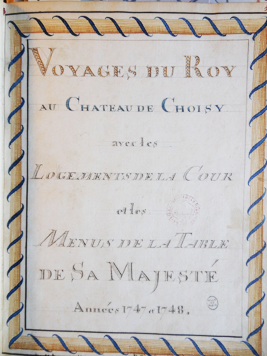



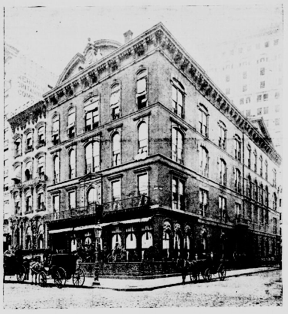
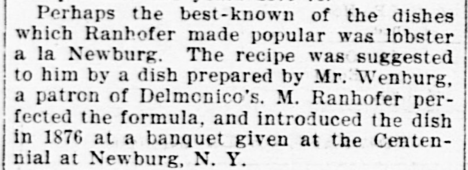

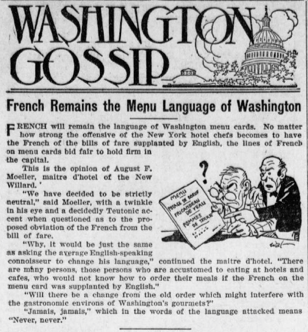
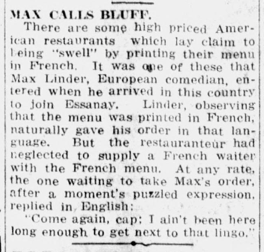
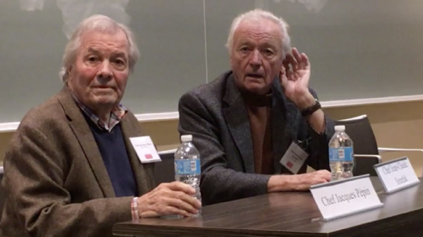


23 comments
thank you
https://elkooora.com/
This cant be true, sometimes we might need to look at something similar to the project as it might be relevant i dont know how but it is as it. https://www.kroger-feedback.info/ something that cant be done, so why is it so so i want to be something that is what is wanted. here i am with this.
Good web site you have got here.. It’s hard to find quality writing like yours these days.
Single Dental Implant Treatment In Jaipur
Your web log isn’t only useful but it is really creative too.
Interior Design Ideas
These are actually impressive ideas in concerning blogging. Its great. I high appreciate this post. You’ve nailed it! update this blog with more information.
Producer Company Registration
Really jubilant to say, your post is exciting to read. I never stop myself to say something about it. You’re doing a great job.
Website Development & Designing Company In Jaipur
I am really happy with articles quality and presentation.
Best Taxi Service In Jaipur
Thank you for the information that you provide, it helped me a lot
Tempo Traveller in Haridwar Rishikesh
Very nice blog. I amply to visit your blog. Now I am found what I want. I check your blog every day and try to learn something from your blog.
Meesho Account Management Services
Yes! this is absolutely right blog for those who are looking for the relevant information and who wishes for it.
Indian Astrology Future Career Predictions
Thanks for sharing useful information for us.I really enjoyed reading your blog, you have lots of great content
match making for love
The post is written in very a good manner and it contains many useful information for me
Free Guest Posting Sites 2023
Shimla Sightseeing Tour, Shimla Local Sightseeing Tour Packages, Shimla Sightseeing Cab, Shimla Sightseeing Taxi, Shimla Sightseeing Package.
Sam Peterson is a Sales Manager for an Australia’s leading Microsoft Dynamics Partner, Dynamics Square. Dynamics Square is the leading Microsoft Dynamics 365 Partner in Australia. The company is offering services and providing top-notch technology solutions in some of the leading Australian cities, namely Sydney, Melbourne, Perth, and Brisbane. Get in Touch for Dynamics NAV Support.
Dynamics 365 Optimize operations, drive innovation, build a resilient supply chain and get greater financial visibility with the best ERP Solutions for Non For Profit. You should take help from professionals who have immense experience on Dynamics 365 Solutions for Non For Profit. They will help you with Solutions easily. Get in Touch: Dynamics 365 Non For Profit Industry
Dynamics 365 for Operations offers several advantages, including streamlined business processes, improved operational efficiency, real-time data visibility, enhanced supply chain management, integrated financial management, advanced analytics, scalability, and cloud-based accessibility. It empowers organizations to optimize operations, make informed decisions, and drive growth while reducing costs and complexity. Read more on: https://dev.to/dynamicssquareau/advantages-of-implementing-dynamics-365-for-operation-3jng
Huluadblocker is a browser extension that helps block advertisements while streaming content on the platform, it prevents ads from playing during TV shows, movies, and series that allow you to watch your favorite programs and shows without any disruptions.
Look no further than a YouTube watch party! Enjoy YouTube with your friends, or loved ones, no matter where you are. Use live chats, videos, and calls to talk and have fun together. It’s like having your own showtime parties, even if you’re far away!
The Art of Naming Dishes’ is a fascinating exploration of how culinary names are steeped in history and culture. It beautifully illustrates how a dish’s name can be a window into its origins, ingredients, and the stories behind its creation. This piece underscores the significance of names in connecting us with the traditions and innovations of culinary art. It’s enlightening to see how a simple name can encapsulate centuries of history, regional influences, and the creativity of chefs. It makes one appreciate not just the flavors, but also the rich heritage embedded in every bite
https://timesalert.com/krogerfeedback/41445/
This is an impressive post. Keep on blogging. This is an excellent post, thanks.
Best Dental Clinic Jaipur
Very helpful! My website raozat.com not only provides information about real estate but is also a valuable source of knowledge about food and nutrition. This focus helps meet the needs of those interested in health and a healthy lifestyle.
Thank you for sharing, Food is the source of energy and health of life. Come to rankingpark.net to discover nutrition and healthy lifestyle secrets that will help you live happily and energetically!
Very helpful! sanhangsale.com is a valuable resource for discounted food and nutrition. This is a fun and useful website for people who want to maintain a healthy and frugal lifestyle!